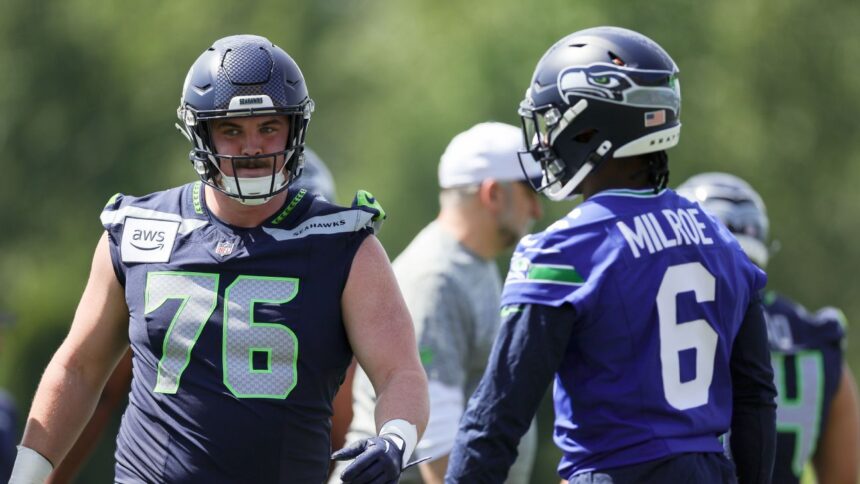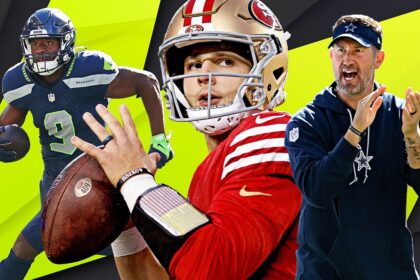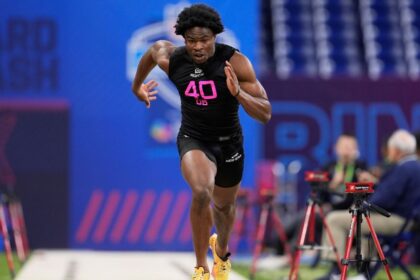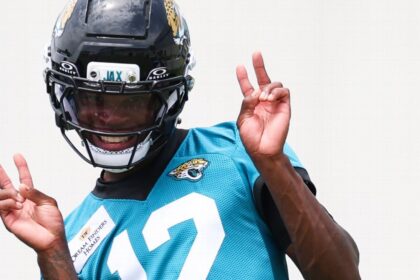The 2025 NFL Draft left behind a series of promising matchups between prospects and teams throughout its 257 selections. We analyze which players seem to be best positioned for success on their new teams.
We have selected 15 ideal combinations, considering the characteristics of the players, the tactical schemes, the game trends, and the coaching staffs of the league. Who are the ones who landed in the perfect place? We have included some first-round selections and other players chosen later in the draft, even a Day 3 pick.
Here is our annual list of the best fits, starting with an immediate-impact defensive tackle in the AFC. Prospects are listed below by draft selection order.
Mason Graham, DT, Cleveland Browns
Selected: Round 1, No. 5
Why it fits: Graham’s ability to generate disruption inside the defensive line is a boost for the Browns’ defensive line, where he will play as a 3-technique tackle in Jim Schwartz’s system. The foot speed, hand usage, and explosion in short spaces led Graham to record 17.5 tackles for loss in his three seasons at Michigan.
In addition, we must not forget Schwartz’s ability to design plays for Graham from multiple fronts as a passer. In Cleveland’s defense, Graham can use his movement skills in fakes and loops, while also getting one-on-one matchups inside. And don’t be surprised if you see him running as an upright nose tackle against the centers.
Tetairoa McMillan, WR, Carolina Panthers
Selected: Round 1, No. 8
Why it fits: Under coach Dave Canales, McMillan will quickly become a priority target for quarterback Bryce Young from multiple formations. McMillan can play as a Z receiver alongside the tight end, but we see him best as the X receiver in Canales’ system. From this position, he can create isolation matchups for Young downfield. And from slot formations, his 6-foot-4-inch frame presents problems for opposing defenses.
In addition, McMillan can be designed in entry concepts, where he can use his coverage awareness to be available at the intermediate levels of the field. Carolina needed a matchup player in the passing game, and they get that with McMillan. He had 40 contested catches and 26 touchdowns throughout his career at Arizona.
Kelvin Banks Jr., OT, New Orleans Saints
Selected: Round 1, No. 9
Why it fits: New coach Kellen Moore is modeling his offense from the Super Bowl-bound offense in Philadelphia by fortifying the edges. Moore had two unique pillars with the Eagles in Lane Johnson and Jordan Mailata. And now, by selecting Banks to pair with Taliese Fuaga, a 2024 first-round pick, he gives the Saints fundamental building blocks at offensive tackle.
With Fuaga on the right side, Banks fits here as the left tackle for New Orleans. He’s a player who moves easily and controlled, with the foot speed to match up against defenders on the edge. And he’ll bring some ability as a run blocker to Moore’s offense. New Orleans was 29th in pass block win rate (54.0%) and 19th in run block win rate (71.3%) last season. It needed upgrades.
Colston Loveland, TE, Chicago Bears
Selected: Round 1, No. 10
Why it fits: Loveland is a refined route runner with positional flexibility, and that enhances new coach Ben Johnson’s offense in the passing game. At 6-foot-6, 248 pounds, Loveland can play inline, move to the slot, or even motion to the back of 3×1 formations. He’s more than just a big seam stretcher; Loveland can create separation coming out of his routes and has the lower-body quickness to get open against press coverage. He’s a three-level target.
Those traits give Johnson’s offense more creativity from a formation perspective, as Chicago could focus on two-TE formations with Loveland and Cole Kmet on the field. With the additions of Loveland and second-round receiver Luther Burden III, the Bears are setting up quarterback Caleb Williams with a versatile group of pass catchers.
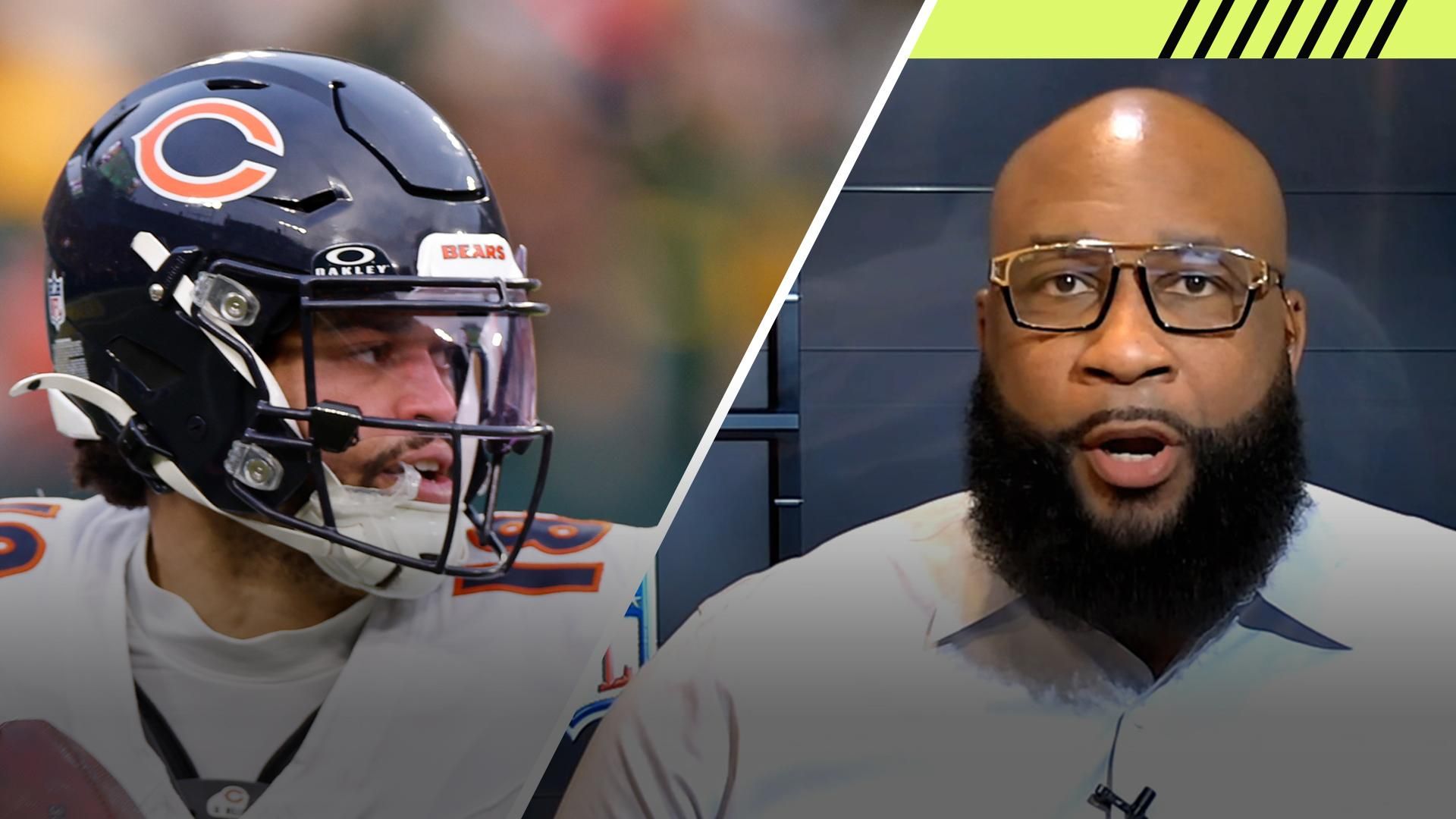
2:00Why Marcus Spears likes the Bears’ rebuild. Marcus Spears and Jason McCourty praise the Bears’ offseason and say it’s time for Caleb Williams to step up.
Mykel Williams, Edge, San Francisco 49ers
Selected: Round 1, No. 11
Why it fits: Under new defensive coordinator Robert Saleh, Williams fits as a three-down defender on the 40 front line of San Francisco. Saleh can create a launchpad for Williams as a passer from wide alignments, which should put him in a position to win with speed and power against Nick Bosa. In addition, I can see Saleh designing some interior matchups. That would allow Williams to use his 6-foot-5-inch physique and quickness to attack guards in protection.
Williams is an edge-setting defender who will compete at the point of attack, so he’s also built for the job on early downs as a run defender. He needs more development, but the physical tools and playing style fit the 49ers’ defensive identity under Saleh.
Grey Zabel, G, Seattle Seahawks
Selected: Round 1, No. 18
Why it fits: Zabel upgrades a Seahawks offensive line that lacked talent at the guard position last season. The 6-foot-6, 312-pound North Dakota State player can generate movement off the ball as a run blocker. More specifically, he has the mobility to combo block and climb in the outside zone game under new Seahawks coordinator Klint Kubiak.
Zabel was the best player I saw practice at the Senior Bowl. He can mirror interior rushers and anchor to handle power. I see a tone-setting player, a player who can help re-establish the identity of the Seahawks’ offensive line. And the overall scheme fit is perfect.
Malaki Starks, S, Baltimore Ravens
Selected: Round 1, No. 27
Why it fits: Pairing Starks with Kyle Hamilton gives the Ravens two interchangeable safeties in the secondary, meaning the defense can disguise coverages and change the post-snap look. Starks has the range to track the ball and play from depth, and can come down to patrol the underneath zones.
Starks had six interceptions and 15 pass deflections during his time at Georgia, and we’ll see his versatility interwoven into the Ravens’ game plan. This is a smart fit for a defense that uses its safeties as matchup pieces from a variety of alignments, both in base and sub packages.
Jihaad Campbell, LB, Philadelphia Eagles
Selected: Round 1, No. 31
Why it fits: We know Campbell can play off-ball like a stacked linebacker. The ability to fit in the run game is there. But I also see the speed and coverage awareness to get to depth and close on the ball quickly as a zone defender. Campbell can also blitz. Each of those traits helps Vic Fangio’s defense on the second level.
Campbell can be more than a traditional linebacker in Philadelphia. Like Zack Baun last season, Campbell has the physical skills to set an edge against the run. He can also line up as an outside linebacker to pressure the passer, utilizing his first-step quickness and lower-body flexibility to run the arc. Campbell has high potential in this defense.
Will Johnson, CB, Arizona Cardinals
Selected: Round 2, No. 47
Why it fits: Smoother than sudden, Johnson plays with aggressive eyes in high school and has explosive traits. That works in a Cardinals defense that tends to be more zone-oriented (61% of opponent dropbacks last season). In Cover 3 or quarters coverages, he can use his backfield vision to get ahead of the throw. In Cover 2, he can sink and break as the flat defender.
Standing at 6-foot-2, Johnson can also press and stick after the receiver’s initial release. But Arizona’s high zone coverage percentage will put him in position to use his perimeter playmaking skills. Johnson had nine interceptions at Michigan over three seasons, including three defensive touchdowns.
Mike Green, Edge, Baltimore Ravens
Selected: Round 2, No. 59
Why it fits: Green can be set up as a pass rusher in Baltimore, similar to the team’s current use of Kyle Van Noy. That means hand-to-hand designed, both off the edge and inside, with the spin fakes that should allow Green to launch down open running lanes. He can also drop into coverage, giving Baltimore the ability to better disguise pressures.
Green’s 17 interceptions led the FBS in 2024, and I thought he was the most skilled passer in this class. He’s explosive out of the pocket, with multiple counter moves that will translate on Sundays.
RJ Harvey, RB, Denver Broncos
Selected: Round 2, No. 60
Why it fits: The running back position is a fundamental piece in Sean Payton’s offense, and Harvey has the characteristics to play a dual-threat role for Denver. At 5-foot-8, 205 pounds, he can run through contact and handle the volume as a primary running back. His lateral quickness and straight-line speed help him create even more on the ground. Harvey will also be a factor in the passing game for Payton. He will run combination routes from the backfield to stress the edge coverage, while releasing on choice routes to uncover second-year quarterback Bo Nix. Also add screen concepts as an option.
Despite reaching the playoffs for the first time since 2015, the lack of production from the Broncos’ running back group limited this offense in key game situations. Harvey can change that in 2025.
Darien Porter, CB, Las Vegas Raiders
Selected: Round 3, No. 68
Why it fits: Porter has all the physical tools to become a great press cornerback. He’s long, at 6-foot-4 and 195 pounds, and can keep up with wide receivers using his 4.3 speed. But Porter’s success won’t be limited to man coverage. He can find the ball in zone, which fits into Raiders defensive coordinator Patrick Graham’s core coverages.
In 2024, the Raiders played zone coverage on 65.2% of opponent dropbacks (the eighth-highest rate in the league). Graham leaned particularly on Cover 3 and Cover 2, where Porter can produce due to his field vision and closing burst. He will block throwing lanes and use his ball skills as a former receiver to finish plays. He had three interceptions last season.
Kyle Williams, WR, New England Patriots
Selected: Round 3, No. 69
Why it fits: Williams can operate as a vertical threat for quarterback Drake Maye, and he can hit the accelerator after the catch. With Josh McDaniels back as offensive coordinator in New England, Williams can be schemed to get free access off the line to run the crosses and overs. He could also see some manufactured touches (screens, fly sweeps) to maximize his electric ability.
Last season, Williams averaged 17.1 yards per reception at Washington State, and scored 14 touchdowns. He’ll have to climb the depth chart in New England as a rookie, but he’s a big-play target who brings more energy to the team’s receiving corps.
Kaleb Johnson, RB, Pittsburgh Steelers
Selected: Round 3, No. 83
Why it fits: Johnson is at his best in the outside zone game, a fundamental part of coordinator Arthur Smith’s offense. He presses the edges and is good at finding cutback lanes to move north-south with the ball. At 6-foot-1 and 224 pounds, he can also push through arm tackles for explosive plays. Johnson had 21 runs of 20-plus yards in 2024, which was the second-most nationally, behind Ashton Jeanty. He will share the backfield with Jaylen Warren in Pittsburgh, but could emerge as the early-down back. In the passing game, Johnson will see targets on screens and swings.
Jalen Royals, WR, Kansas City Chiefs
Selected: Round 4, No. 133
Why it fits: With coverage awareness to find open zone voids and a competitive playing style after the catch, Royals can operate in Andy Reid’s system as a mid-level target for quarterback Patrick Mahomes. Royals is willing to work in the high-traffic areas of the field, where he can make contested catches. And he turns underneath throws into explosive plays.
As a long ball target, Royals has the speed to be designed situationally. But I really like the fit here based on the Chiefs’ leveled concepts, run-pass options, and three-step throws. These types of plays will allow him to find open grass and gain even more yards after the catch.

